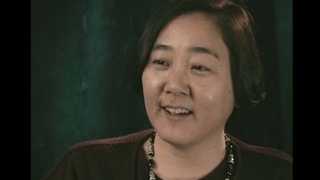Interviews
The Hapa Project
The Hapa Project is an idea I came up with about 10 years ago of photographing people that may have gone through similar situations that I went through. And it was a project that I wanted to go about to see if I could try and find a place where I could have a bit more of a home. It started out kind of selfish in that way. I wanted a thing where I wanted to find people like me. And I thought about how to do it for a long time because I’d been making films and I’ve written another book about these subjects, and I thought, how would it be to actually take this question, “What are you?” which we get all the time, and actually put it back in the power of the people that are answering. And let them answer in their own way—not in just their own words but in their own handwriting.
And so I basically came up with the idea of photographing people who are Hapa—which is a slang word to begin with, which can be defined in many ways—photographing them from just straight up, collarbone up, no jewelry, no clothing, no make-up, no expression, just the way you are. Because we live in a world where we have to prove we are who we are all the time. We have driver’s licenses, and passports, and student i.d.’s, and I can’t get anywhere on campus without proving I really am who I am. And so we have these pictures that prove it, and I thought, well, let’s let people have the power to do this. Come here, we’ll take a picture, you pick the one you like, you write your response to the question “What are you?” and we’ll go from there. And it became a larger exhibition and a book.
Date: May 3, 2006
Location: California, US
Interviewer: Jim Bower
Contributed by: Watase Media Arts Center, Japanese American National Museum.
Explore More Videos

Different tension between East Coast and Los Angeles
Japanese American Creative designer living in Japan

Differences between American and Japanese taiko
(b.1943) Shin-issei grand master of taiko; founded San Francisco Taiko Dojo in 1968.

Meeting Japanese Americans from the mainland in MIS
(1923-2011) Lawyer, MIS veteran, founder of Francis and Sarah Sogi Foundation


Sudden acceptance in Japanese society
(b. 1967) Hawai`i-born professional fighter in Japan

Ring name: "Yamato Damashi"
(b. 1967) Hawai`i-born professional fighter in Japan


Citizenship and identity
(b. 1967) Hawai`i-born professional fighter in Japan

Importance of self-representation in legislation
(1927-2010) Political Activist

Defining the term Nikkei
(1923-2011) Lawyer, MIS veteran, founder of Francis and Sarah Sogi Foundation


Support from the Japanese American community
(b.1971) Professional figure skater and Olympic gold medalist.

Heightened awareness of identity as a Japanese American
(b. 1955) Lawyer

Reasons for conformity and competitiveness in Gardena, California
(b. 1946) Lawyer

